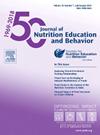Point-of-Care Technology Supports Implementation of 5As Framework for Dietary Behavior Change
IF 2.3
3区 医学
Q2 EDUCATION, SCIENTIFIC DISCIPLINES
引用次数: 0
Abstract
Background
Practice guidelines recommend physicians discuss diet with patients using the 5As framework: Assess behavior, Advise personalized behavior change recommendations, Agree on goals, Assist by addressing barriers/securing support, and Arrange follow-up. We developed Nutri, a point-of-care software that synthesizes diet data collected before the appointment (Assess), provides evidence-based recommendations (Advise), guides patients and providers to select one diet goal (Agree), tailors take-home materials to support goal attainment (Assist), and facilitates follow-up via automated clinical note (Arrange).
Objective
Evaluate differences in diet counseling among physicians with and without access to Nutri during a simulated appointment.
Study Design, Settings, Participants
We randomized primary care resident physicians to discuss nutrition during a simulated diabetes appointment with a patient actor. Control physicians (n=13) were prompted to discuss diet with the patient. Nutri physicians (n=11) were oriented to Nutri and prompted to use it in the simulation. Simulations were videorecorded.
Measurable Outcome/Analysis
Time in simulation. Deductive coding of recordings using U.S. Preventive Services Task Force 5As definitions.
Results
Control simulations were ∼3 minutes longer than Nutri (Mean±SD = 9.23±3.87 vs. 6.01±1.35). Control physicians assessed by asking patients to recall a typical eating day; Nutri physicians highlighted successes and potential areas for improvement, referring to Nutri's automated assessment. Control physicians advised on many topics, differing from Nutri physicians who advised on 1-2 high-impact areas. Nutri physicians and patients agreed on one goal after considering patient self-efficacy, whereas Control physicians gave physician-led recommendations. Both groups assisted by giving food examples to address the patient’s knowledge barrier. Nutri physicians asked how these foods could be incorporated into the patient’s diet and provided goal-focused take-home materials. Alternatively, Control physicians offered various ideas, but no post-appointment support. Control physicians arranged by mentioning they would discuss diet at the next visit, whereas Nutri physicians planned to discuss goal progress.
Conclusions
While Control aligned with the 5As framework, Nutri sessions were less variable, more goal-focused, and patient-led. Nutri enables feasible 5As implementation that aligns with behavior change theory, which is likely to increase successful patient dietary management.
Funding
None
护理点技术支持实施饮食行为改变的5a框架
实践指南建议医生使用5a框架与患者讨论饮食:评估行为,建议个性化的行为改变建议,达成目标,通过解决障碍/获得支持来协助,安排随访。我们开发了Nutri,这是一款即时护理软件,它可以综合预约前收集的饮食数据(评估),提供基于证据的建议(建议),指导患者和提供者选择一个饮食目标(同意),定制带回家的材料来支持目标的实现(协助),并通过自动临床记录(安排)促进随访。目的:在模拟预约期间,评估有Nutri和没有Nutri的医生在饮食咨询方面的差异。研究设计、环境、参与者我们随机选取初级保健住院医师,在模拟糖尿病预约期间与患者讨论营养问题。对照医生(n=13)被提示与患者讨论饮食。Nutri医生(n=11)被告知Nutri并被提示在模拟中使用它。模拟过程被录下来。可测量的结果/分析时间模拟。使用美国预防服务工作组5a定义的录音演绎编码。结果对照组的模拟时间比Nutri长~ 3分钟(Mean±SD = 9.23±3.87 vs. 6.01±1.35)。对照医生通过让病人回忆一个典型的饮食日来评估;Nutri的医生根据Nutri的自动评估,强调了成功和潜在的改进领域。对照医生在很多方面都有建议,不同于Nutri医生只在1-2个高影响领域提出建议。“营养组”的医生和患者在考虑了患者的自我效能感后就一个目标达成了一致,而“控制组”的医生则给出了由医生主导的建议。两组都通过提供食物例子来解决患者的知识障碍。营养医生询问如何将这些食物纳入患者的饮食,并提供目标明确的带回家的材料。另外,控制组的医生提供了各种各样的建议,但没有预约后的支持。控制组医生计划在下次来访时讨论饮食问题,而营养组医生计划讨论目标进展情况。对照组与5a框架保持一致,而Nutri疗程变化较少,更注重目标,并以患者为主导。Nutri使可行的5As实施与行为改变理论相一致,这可能会增加成功的患者饮食管理。FundingNone
本文章由计算机程序翻译,如有差异,请以英文原文为准。
求助全文
约1分钟内获得全文
求助全文
来源期刊
CiteScore
4.20
自引率
11.50%
发文量
379
审稿时长
44 days
期刊介绍:
The Journal of Nutrition Education and Behavior (JNEB), the official journal of the Society for Nutrition Education and Behavior, is a refereed, scientific periodical that serves as a global resource for all professionals with an interest in nutrition education; nutrition and physical activity behavior theories and intervention outcomes; complementary and alternative medicine related to nutrition behaviors; food environment; food, nutrition, and physical activity communication strategies including technology; nutrition-related economics; food safety education; and scholarship of learning related to these areas.
The purpose of JNEB is to document and disseminate original research and emerging issues and practices relevant to these areas worldwide. The Journal of Nutrition Education and Behavior welcomes evidence-based manuscripts that provide new insights and useful findings related to nutrition education research, practice and policy. The content areas of JNEB reflect the diverse interests in nutrition and physical activity related to public health, nutritional sciences, education, behavioral economics, family and consumer sciences, and eHealth, including the interests of community-based nutrition-practitioners. As the Society''s official journal, JNEB also includes policy statements, issue perspectives, position papers, and member communications.

 求助内容:
求助内容: 应助结果提醒方式:
应助结果提醒方式:


